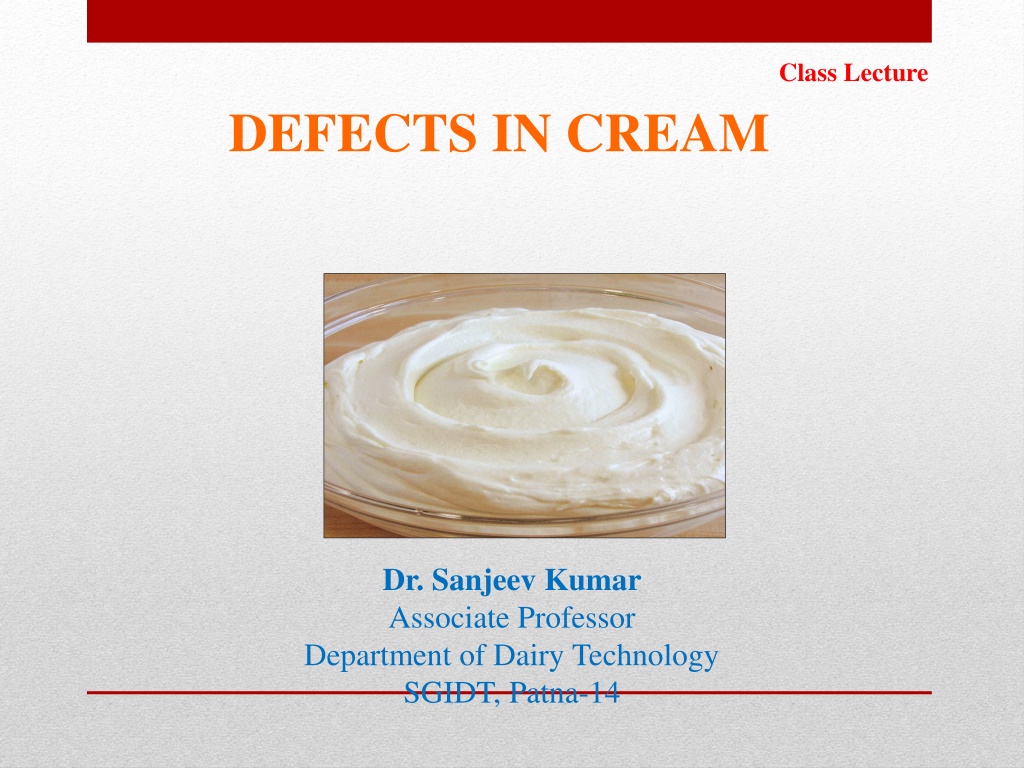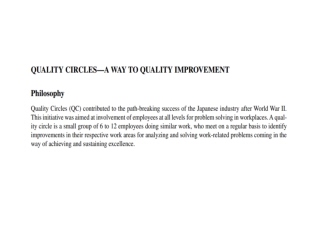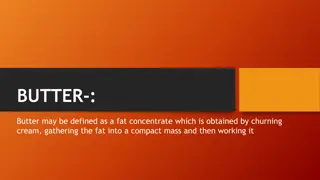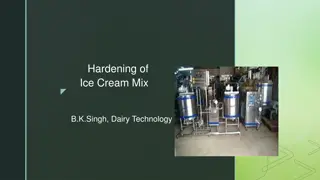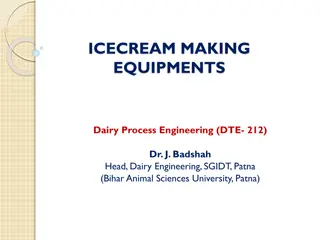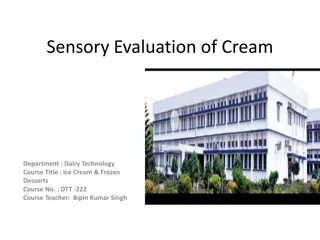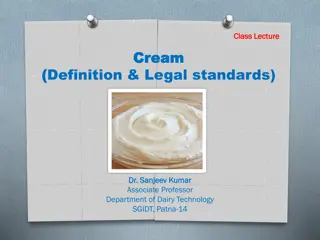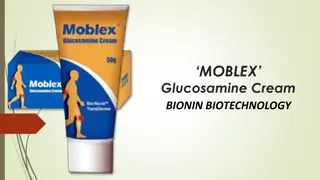Understanding Cream Defects: Causes, Prevention, and Interpretation
Dive into the world of cream defects with insights from Dr. Sanjeev Kumar, an Associate Professor in Dairy Technology. Explore the relation between microbiological quality and interpretation results, understand flavor defects in market cream, and learn about miscellaneous defects like feathering in coffee cream. Discover the causes and prevention methods for various cream defects, from cooked and rancid flavors to barny and bitter tastes in manufacturing cream.
Download Presentation

Please find below an Image/Link to download the presentation.
The content on the website is provided AS IS for your information and personal use only. It may not be sold, licensed, or shared on other websites without obtaining consent from the author. Download presentation by click this link. If you encounter any issues during the download, it is possible that the publisher has removed the file from their server.
E N D
Presentation Transcript
Class Lecture DEFECTS IN CREAM Dr. Sanjeev Kumar Associate Professor Department of Dairy Technology SGIDT, Patna-14
RELATION BETWEEN MICROBIOLOGICAL QUALITY AND INTERPRETATION RESULTS INTERPRETATION High count and high Coliforms Inadequate heat treatment and or Unhygienic manufacture and or storage at high temperature. High count but low Coliforms Good hygiene but storage at high temperature Low count but high Colifoms Poor hygiene in manufacture but storage at low temperature less than 5 C Low count and low Coliforms but high Moulds Good hygiene except aerial contamination in dairy Low count and low Coliforms but high yeasts Good hygiene except contamination from fruits, directly or indirectly Low count and low Coliforms but high aerobic spores Cream made from milk having a high spore count
FLAVOUR FLAVOUR DEFECTS DEFECTS IN MARKET CREAM IN MARKET CREAM Name of Defect Causes Prevention Cooked Excessive heating of cream during pasteurization. Proper heating of cream during pasteurization Highly acid/sour i. Using sour milk for separation ii. Acid development in cream (i). Using fresh, sweet milk for preparation (ii). Neutralization of cream. Oxidized/oily/Metallic/ Tallowy Fat oxidation due to direct contact of milk with copper or iron, exposure of milk or cream to sunlight, etc. i. Proper tinning of milk or cream holding vessels, or using aluminium alloy or stainless steel as contact surface ii. Vacuum pasteurization of cream Rancid Fat hydrolysis due to lipase action in milk or cream Inactivating lipase by proper pasteurization of milk and cream
MISCELLANEOUS DEFECTS MISCELLANEOUS DEFECTS IN MARKET CREAM IN MARKET CREAM FEATHERING IN COFEE CREAM FEATHERING IN COFEE CREAM CAUSES: CAUSES: 1. Excessive homogenisation pressure. 2. Using sour cream. 3. Addition of salts. PREVENTION: PREVENTION: 1. Proper homogenisation pressure. 2. Using sweet cream. 3. Avoiding addition of salts.
FLAVOUR DEFECTS IN MANUFACTURING CREAM Defects Causes Prevention Barny (i). Poor ventilation of milking byre/barn (i). Proper ventilation of milking byre/barn (ii). Not keeping milk properly covered during production (ii). Keeping milk properly covered during production Bitter (i). Intake of bitter weeds by milch animals (i). Eradication of off ending weeds. (ii). Lipase activity during (raw) cream separation (ii). Checking lipase activity by avoiding the danger zone(38- 490C) in cream separation. (iii). Growth of Proteolytic bacteria in cream (iii). Storage of cream at 50C(400F) or below to check bacterial growth.
Defects Causes Prevention Storage of cream at 50C(400F) or below to check bacterial growth. Storage of cream at 50C(400F) or below to check acid development (i). Avoid Feeding of milk tainting feeds and weeds soon milking Cheesy Growth of Proteolytic bacteria leading to casein break down. Coarse-acid/sour Uncontrolled acid development in cream Cooked , Feed and weed Rancid Oxidized etc. Feeding of milk tainting feeds and weeds within 3 hours before milking. (ii). Eradication of milk tainting weeds. (iii). Vacuum pasteurization of cream
Defects Causes Prevention Storage of cream at 50C(400F) or below to check microbial growth. Fruity Development of by- products of growth of certain un-desirable micro-organisms Using dirty utensils Growth of lactose fermenting yeasts Utensil Yeasty Using well cleaned utensils Storage of cream at 50C(400F) or below to check yeast growth
JUDGING AND GRADING OF CREAM 2. Check for sediment at bottom 3. Observe for general appearance and cleanliness 1. Check for serum separation 6. Determine viscosity 5.Secure sample for bacterial count 4. Take note of cream plug 7. Check for organoleptic properties 8. Determine fat % and titratable acidity 9. Test for defects
USES OF CREAM USES OF CREAM For direct direct consumption consumption as /whipping /whipping cream cream. . In In the the preparation preparation of of special In In the the production production of of plastic, cultured cultured cream cream. . In In the the manufacture manufacture of of butter, cream, cream, butter butter oil oil and For For creaming creaming of of cottage cottage cheese For as table table /coffee /coffee special dishes plastic, frozen dishes. . frozen and and butter, cheese, cheese, ice and ghee ghee (INDIA) (INDIA). . cheese. . ice
